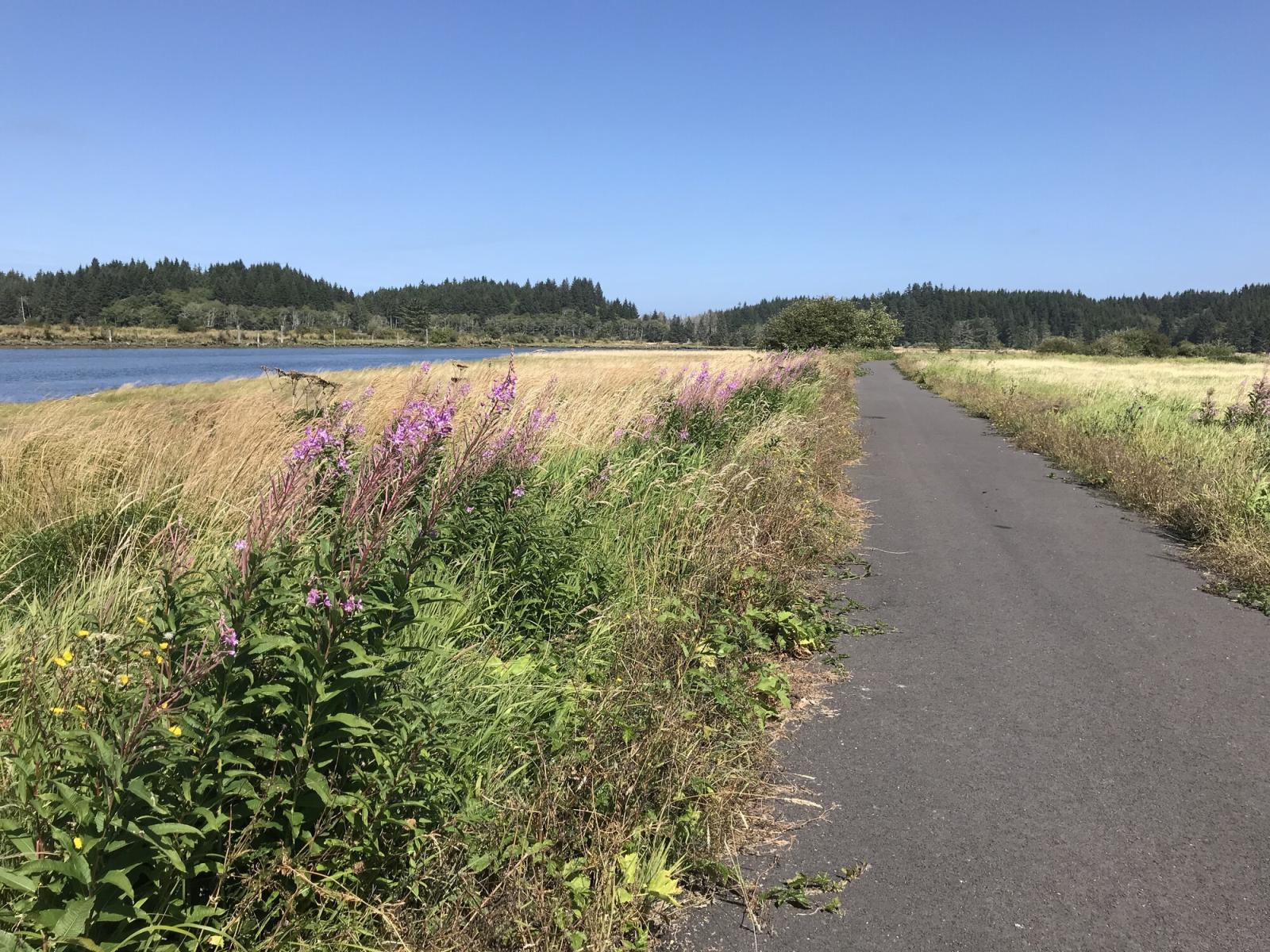
The Johns River Unit is managed for estuary restoration, primarily for waterfowl habitat, and some dryland agriculture for elk and waterfowl. Hunting occurs for deer, waterfowl, elk, bear, band-tailed pigeon, and forest grouse. Waterfowl hunting is particularly popular and successful on the tidelands on nearby Markham Island, and fishing is widespread for whitefish, rainbow and cutthroat trout, sea run cutthroat, and several races of salmon. Hiking and wildlife watching trips are common on the dikes and the established trail system.
The Johns River Unit is located 10 miles south of Aberdeen in Grays Harbor County. The unit can be accessed from Game Farm Road, off of John's River Road, from Highway 105.
The John's River Unit is within the Grays Harbor watershed. Adjacent lands include private tree farms, cranberry bogs, and lands owned by the Department of Natural Resources.
This unit is part of the Johns River Wildlife Area.
Game Management Unit: 658
Getting there
Maps and directions to WDFW-managed access points for this unit. Opens Google Maps in a new tab.
Recreation and public access
A Discover Pass is required on WDFW lands -- including water access areas, wildlife areas, and campgrounds -- unless you already have a Vehicle Access Pass issued with the purchase of an eligible hunting or fishing license. Recreate responsibly on public lands: please know the Public Conduct Rules.
Public facility information:
- Improved ADA parking area
- Restrooms
- ADA trail and hunting blinds
Recreation and access advisories
- Overnight parking and camping is prohibited
Hunting
Hunting occurs for deer, waterfowl, elk, bear, band-tailed pigeon, and forest grouse. Waterfowl hunting is particularly popular and successful on the tidelands on nearby Markham Island.
This unit has an ADA trail and hunting blinds.
Fishing
Fishing is widespread for whitefish, rainbow and cutthroat trout, sea run cutthroat, and several races of salmon.
This unit has a boat ramp.
Wildlife viewing
This unit includes salt-marsh estuary, freshwater cedar swamp, forest-covered hills, and managed agricultural areas, offering opportunities to view a variety of wildlife, including black bear, bobcat, black-tailed deer, Roosevelt elk, muskrat, rabbit, forest grouse, band-tailed pigeon, songbirds, waterfowl, and shorebirds.
A nearby nesting Caspian tern colony, offers opportunities to view this species using the Johns River. An established trail system and dike-top paths, offer wildlife-watching access.
Search for potential birding opportunities on or near a wildlife area unit by using eBird Northwest, a citizen science database portal that provides freely-shared bird lists at 'hotspots' and interactive maps plus other birding information updated daily.
Conservation
As the waters of Johns River flow into Grays Harbor they deposit sediments that have built the salt-marsh estuary. Extensive mudflats adjoin prime freshwater cedar swamp found behind old dikes. Forest-covered hillside uplands slope in from the east and west. Streams support whitefish, trout, and salmon.
Special habitats and species
The most common mammals are Roosevelt elk, black-tailed deer, black bear, coyote, bobcat, muskrat, and rabbits. Birds are mostly ducks, geese, and shorebirds. A nesting Caspian tern colony is nearby and makes use of the Johns River. Crows, great blue herons, hummingbirds, robins, warblers, goldfinches, swallows, snipe, gulls, and many other small birds abound, along with forest grouse and band-tailed pigeon.
Conservation goals
- Protect and restore estuary habitat
- Restore and protect wetland habitat
The most common mammals are Roosevelt elk, black-tailed deer, black bear, coyote, bobcat, muskrat, and rabbits. Birds are mostly ducks, geese, and shorebirds. A nesting Caspian tern colony is nearby and makes use of the Johns River. Crows, great blue herons, hummingbirds, robins, warblers, goldfinches, swallows, snipe, gulls, and many other small birds abound, along with forest grouse and band-tailed pigeon.
- Protect and restore estuary habitat
- Restore and protect wetland habitat
Land stewardship
The John's River Unit was acquired for waterfowl habitat, benefits to wildlife and habitat, and compatible recreation and education.
Acquisition history
The parcels making up this area were purchased between 1955 and 2010.
| Funder | Fund |
|---|---|
| Private Grantor | Mitigation Funds |
| State of Washington | Transfer of land |
| US Fish and Wildlife Service | Pittman-Robertson Wildlife Restoration Program |
| US National Park Service | Land and Water Conservation Fund |
| WA Dept of Fish and Wildlife | WDFW Game Fund (now Wildlife Fund) |
| WA Recreation and Conservation Office | State Bond Account |
Management planning
2006 Olympic-Willapa Hills Wildlife Area Management Plan
Every eight to 10 years, the Washington Department of Fish and Wildlife (WDFW) revises management plans for each of its 33 wildlife areas to document current conditions, address new agency initiatives, and identify new management priorities and actions. In between those major revisions, WDFW updates plans every two years to outline short-term objectives and accomplishments. In 2014, WDFW began the process of updating existing plans, many of which were written in 2006. The new plans are being developed with significant public participation and input.